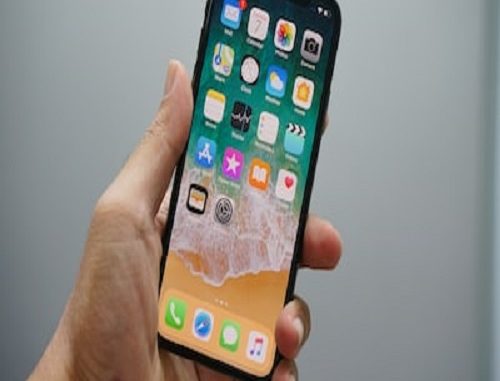
Personalizing your iPhone is one of the many joys of owning this iconic device. From choosing the perfect wallpaper to customizing your app icons, every little detail can reflect your personality. And when it comes to ringtones, why settle for the default options when you can have your favorite song play whenever you receive a call? In this blog post, we’ll explore various methods to set any song as a ringtone on your iPhone for free, allowing you to add a touch of musical flair to your device.

Set Any Song as Ringtone on iPhone for Free Using GarageBand
Apple is constantly reducing the functionalities on its smartphones in order to promote its services to users. In this scenario, the simplest approach to make a specific song or piece of music a ringtone is to purchase it from the iTunes Store. However, such a basic feature should not cost you anything.
There is a solution to this difficulty, but it is time-consuming. We’ll utilize Garageband to make any music you’ve downloaded your iPhone’s ringtone.
GarageBand, a popular music creation app available on the App Store, not only allows you to compose your own music but also serves as a handy tool for creating custom ringtones. Here’s how you can do it:
Step 1: Download Garageband and Import a Song
- Open the App Store on your iPhone and install the “Garageband application” if you do not already have it on your phone.
- Once “Garageband” is installed and open, swipe right or left until you find the “Audio Recorder” option. Tap on it to open it.
- Now tap on the “Tracks option“, which looks like a “stack of gray lines” on the upper left side.
- Now tap on the “Metronome button” to turn it off (from blue to gray). It looks like a little chime and is located to the right of the red recorder button.
- Now tap the “Loop button” located in the upper right corner, along with the Settings button.
- On the next screen, tap the “Files option” at the top. Then tap on “Browse items from Files app,” which you will find on the button on the left.
- Once your Files app is open, navigate to the folder where you saved the “previously downloaded song” and then tap on the song to import it.
- In the next step, you need to hold the song you just imported and drag it to the track timeline. When you have done this successfully, you will see the song in the timeline with a blue color.
Step 2: Cut the song into a 30-second loop
- Once you see the “blue track” in the timeline, tap the + button in the upper right to open the Song Sections option.
- Click the “8 bars” button here and change it to 30 by tapping the up arrow in the manual option, then tap “Done.” This will loop your song after 30 seconds.
- Next, select the part you want to keep as a ringtone by “dragging the white lines on both ends of the song.” This will select that particular part and make it a 30-second loop.
Step 3: Export the saved Loop and Make it the Ringtone
- Tap the arrow in the upper left corner of your screen, then select “My Songs.” This will save the loop as a file.
- Now press and hold on the file and rename it to your liking using the “Rename” option from the menu.
- Press and hold the renamed file and select the “Share” option from the menu.
- On the next screen, tap “Ringtone” and then “press Continue”.
- On the last screen, check the name of your “ringtone and then press the Export option” in the upper right corner of the screen.
- Once the export is complete, you can set the ringtone directly by selecting “Use sound as from the pop-up” or “press OK” to close it.
- Now head into the “Settings app and go to Sound & Haptics“.
- Now go to “Ringtone” and select the “song you just exported as your ringtone” from the list. Yes, it’s that simple.
Set Any Song as Ringtone on iPhone for Free Using iTunes
If you prefer using your computer to create custom ringtones, iTunes provides a straightforward method. Here’s how you can set any song as a ringtone using iTunes:
- Connect your iPhone and Launch iTunes: Connect your iPhone to your computer using a USB cable and launch iTunes if it doesn’t open automatically.
- Add the Song to iTunes Library: Click on the “File” menu in iTunes and select “Add File to Library” or “Add Folder to Library.” Locate the song you want to set as a ringtone on your computer, select it, and click “Open” to add it to your iTunes library.
- Create a Custom AAC Version: Right-click on the song in your iTunes library, then select “Create AAC Version.” iTunes will create a shorter version of the song in AAC format.
- Rename the File Extension and Convert to Ringtone Format: Locate the AAC version of the song you just created in iTunes and change the file extension from “.m4a” to “.m4r.” This step ensures that iTunes recognizes the file as a ringtone. Double-click the renamed file, and it will be added to the “Tones” section of your iTunes library.
- Sync the Ringtone to Your iPhone: Select your iPhone in iTunes, navigate to the “Tones” section, and check the box next to the newly created ringtone. Click on the “Apply” or “Sync” button to sync the ringtone to your iPhone.
- Set the Ringtone: On your iPhone, go to “Settings” and select “Sounds & Haptics.” Under “Sounds and Vibration Patterns,” tap on “Ringtone” and choose the newly synced ringtone from the list. You have successfully set the song as your iPhone’s ringtone.
Set Any Song as Ringtone on iPhone for Free Using Third-Party Apps
If you prefer a more streamlined approach or additional features, third-party apps can be a convenient option. Here’s an overview of the process:
- Explore Third-Party Apps: Search for ringtone-making apps on the App Store and read reviews to find a reliable and user-friendly option. Some popular apps include “Ringtone Maker,” “Ringtones for iPhone,” and “Zedge.“
- Install and Launch the App: Download and install your chosen app from the App Store. Launch the app once it’s installed on your iPhone.
- Import the Song: Most ringtone apps allow you to import songs directly from your iPhone’s music library. Select the desired song from your library and import it into the app.
- Edit and Customize: Use the editing tools provided by the app to trim the song and select the desired portion for your ringtone. Some apps may offer additional features like fade-in, fade-out, and sound effects to enhance your ringtone.
- Save and Set as Ringtone: Once you’re satisfied with the edits and customization, save the ringtone within the app. The app will guide you through the process of setting the saved ringtone as your default ringtone.
Conclusion
Setting a custom song as your iPhone ringtone can add a personal touch to your device and make receiving calls a more enjoyable experience. In this blog post, we explored three methods to achieve this customization: using GarageBand, utilizing iTunes, or opting for third-party apps. Whether you prefer the flexibility and control of GarageBand, the convenience of iTunes, or the additional features of third-party apps, you now have the tools to set any song as a ringtone on your iPhone for free.
Remember to respect copyright laws and ensure you have the necessary rights to use the songs as ringtones. Additionally, feel free to experiment with different songs and create a diverse collection of ringtones to suit your mood and style.
Now it’s time to let your favorite tunes ring out whenever someone calls. Customize your iPhone with the music that resonates with you, and let your personality shine through your device’s ringtone. Enjoy the process of creating unique ringtones and make every call a musical delight.
Leave a Reply